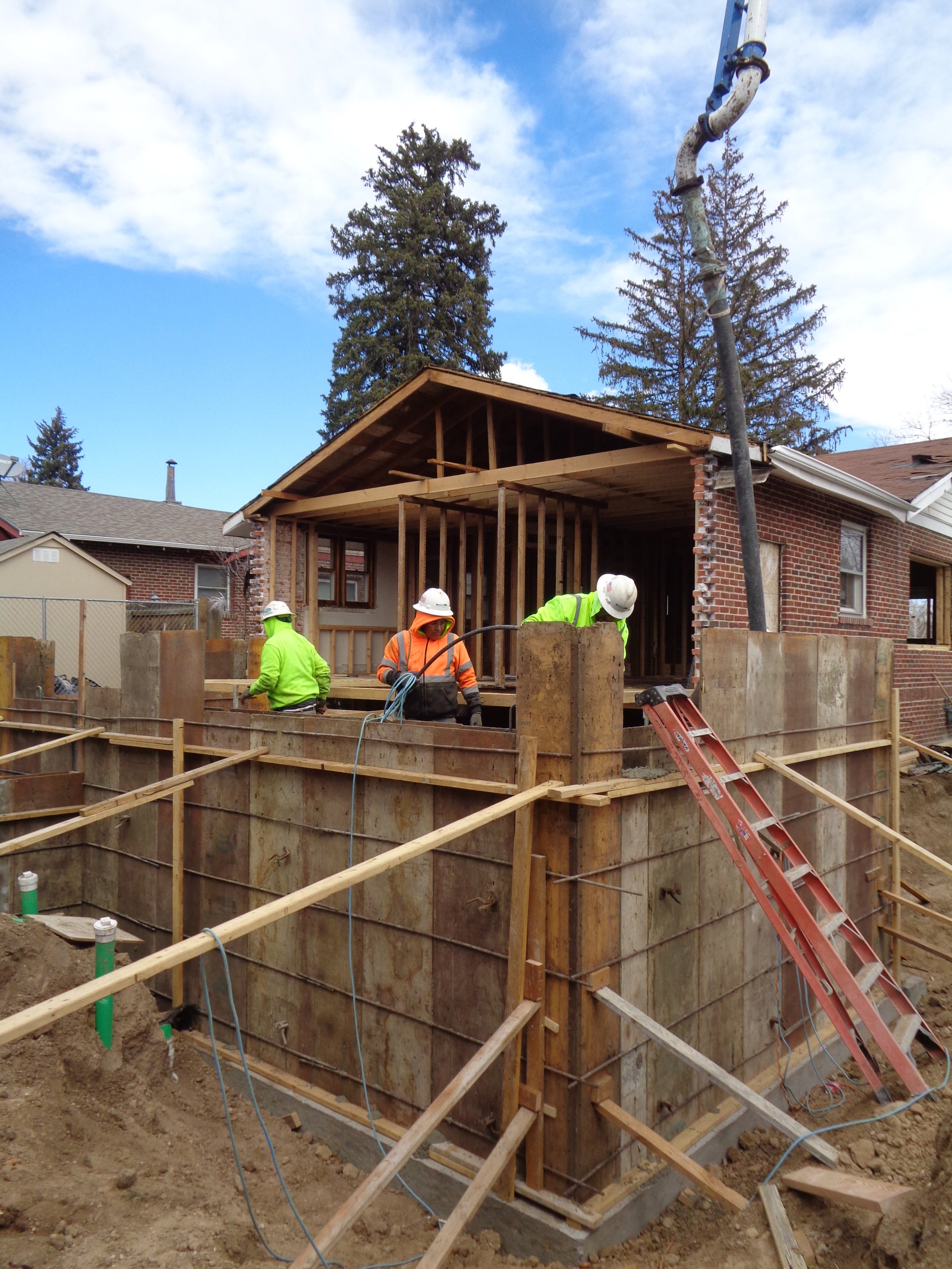I'm constantly amazed by the process of forming and pouring concrete foundations, like this one being built for an addition to a bungalow in Wheat Ridge, CO. The forming crew has to build a plywood wall in which the concrete will go, only to tear it down once the concrete has initially set (as little as 24 hours, although it will take a month to reach full strength). But before they can "button up" the forms, all the reinforcing steel rebar, both horizontally and vertically, has to be carefully placed and inspected. The old concrete foundations for this 1926 home had no steel rebar at all!
When the area to be poured is behind a home, with no safe alley access, they bring in this amazing concrete pumper truck (on right), with an articulating boom, and the concrete mixing truck dumps the grey goop into the hopper to be pumped 100 feet or more . The boom operator controls this from a portable controller hanging from his neck. The lead worker on the concrete crew guides the long flexible hose to all portions of the forms, while several assistants follow closely behind with an industrial-strength "spud vibrator" (looks like a potato on a cable) which is pushed down to vibrate the liquid/cement mix so there are no air pocket voids.
The magical moment is a day or two later when the crew comes back and knocks the plywood forms apart, revealing a solid concrete wall, (shown above). There is no other material we use that has that phase change property, and it never ceases to amaze me! I'm glad I work in an area of the country that favors poured concrete foundations, as they are far superior to concrete block foundations that are used elsewhere.



